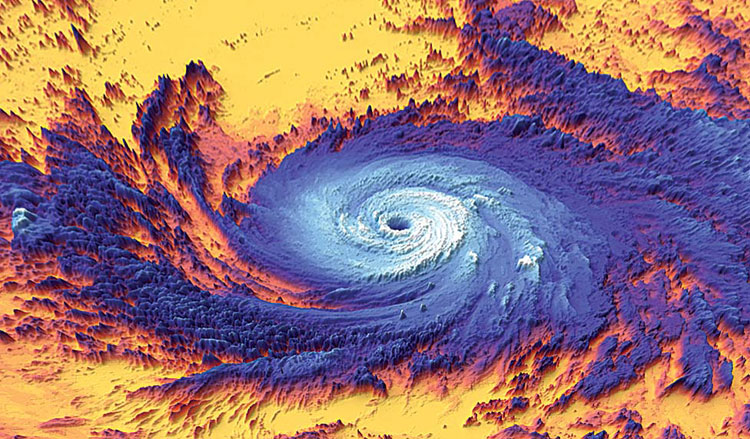INDIAN ARMED FORCES CHIEFS ON OUR RELENTLESS AND FOCUSED PUBLISHING EFFORTS

The insightful articles, inspiring narrations and analytical perspectives presented by the Editorial Team, establish an alluring connect with the reader. My compliments and best wishes to SP Guide Publications.

"Over the past 60 years, the growth of SP Guide Publications has mirrored the rising stature of Indian Navy. Its well-researched and informative magazines on Defence and Aerospace sector have served to shape an educated opinion of our military personnel, policy makers and the public alike. I wish SP's Publication team continued success, fair winds and following seas in all future endeavour!"

Since, its inception in 1964, SP Guide Publications has consistently demonstrated commitment to high-quality journalism in the aerospace and defence sectors, earning a well-deserved reputation as Asia's largest media house in this domain. I wish SP Guide Publications continued success in its pursuit of excellence.
NASA teams up with ISRO to mitigate climate change
The space agencies are joining hands for a new NASA Earth System Observatory to help address climate

It is no secret that the climate on earth is going through major transformations and we need more efforts towards understanding and addressing these issues. In a bid to enhance those efforts, the National Aeronautics Space Administration (NASA) and the Indian Space Research Organisation (ISRO) have come together for NASA’s new Earth System Observatory.
NASA will design a new set of Earth-focused missions to provide key information to guide efforts related to climate change, disaster mitigation, fighting forest fires, and improving real-time agricultural processes, the US space agency informed. With the Earth System Observatory, each satellite will be uniquely designed to complement the others, working in tandem to create a 3D, holistic view of Earth, from bedrock to atmosphere. The observatory is expected to guide efforts related to the above mentioned as well as aid in better understanding Category 4 to 5 hurricanes such as Hurricane Maria.
NASA informed that the observatory follows recommendations from the 2017 Earth Science Decadal Survey by the National Academies of Sciences, Engineering and Medicine, which lays out ambitious but critically necessary research and observation guidance.
NASA Administrator Senator Bill Nelson remarked, “Over the past three decades, much of what we’ve learned about the Earth’s changing climate is built on NASA satellite observations and research. “NASA’s new Earth System Observatory will expand that work, providing the world with an unprecedented understanding of our Earth’s climate system, arming us with next-generation data critical to mitigating climate change, and protecting our communities in the face of natural disasters.”
NASA is currently initiating the formulation phase for the observatory and among its first integrated parts is NASA’s partnership with the Indian Space Research Organisation (ISRO), which brings together two different kinds of radar systems that can measure changes in Earth’s surface less than a half-inch. “This capability will be utilised in one of the observatory’s first missions, intended as a pathfinder, called NISAR (NASA-ISRO synthetic aperture radar). This mission will measure some of the planet’s most complex processes such as ice-sheet collapse and natural hazards such as earthquakes, volcanoes, and landslides. NISAR can assist planners and decision makers with managing both hazards and natural resources in the future,” the space agency added.
Areas of focus for the observatory include:
- Aerosols: Answering the critical question of how aerosols affect the global energy balance, a key source of uncertainty in predicting climate change.
- Cloud, Convection, and Precipitation: Tackling the largest sources of uncertainty in future projections of climate change, air quality forecasting, and prediction of severe weather.
- Mass Change: Providing drought assessment and forecasting, associated planning for water use for agriculture, as well as supporting natural hazard response.
- Surface Biology and Geology: Understanding climate changes that impact food and agriculture, habitation, and natural resources, by answering open questions about the fluxes of carbon, water, nutrients, and energy within and between ecosystems and the atmosphere, the ocean, and the Earth.
- Surface Deformation and Change: Quantifying models of sea-level and landscape change driven by climate change, hazard forecasts, and disaster impact assessments, including dynamics of earthquakes, volcanoes, landslides, glaciers, groundwater, and Earth’s interior.
NASA has been collecting a lot of data that is used to explain the environmental impact of humans on Earth, from documenting climate change and its impacts on ice, sea level and weather patterns, to monitoring the health of forests and the movement of freshwater. Even the International Space Station (ISS) adorns multiple Earth-observing instruments accompanied by the crew aboard the station monitoring glaciers, volcanoes, atmospheric processes, ecological investigations, etc.
With their satellites up in the atmosphere, the space agencies have always been part of observations, disaster prediction, preparedness and management. ISRO too has been continuously offering support for disaster management in terms of cyclones, floods, landslides, forest fires, etc. ISRO had also established a network of 1,158 Automatic Weather Stations (AWS) across the country and has developed technology for many of these observing instruments in house.
The partnership of both NASA and ISRO in monitoring some of the most complex processes that our planet witnesses, could be a crucial development, as the world continues to deal with extensive climate change.





